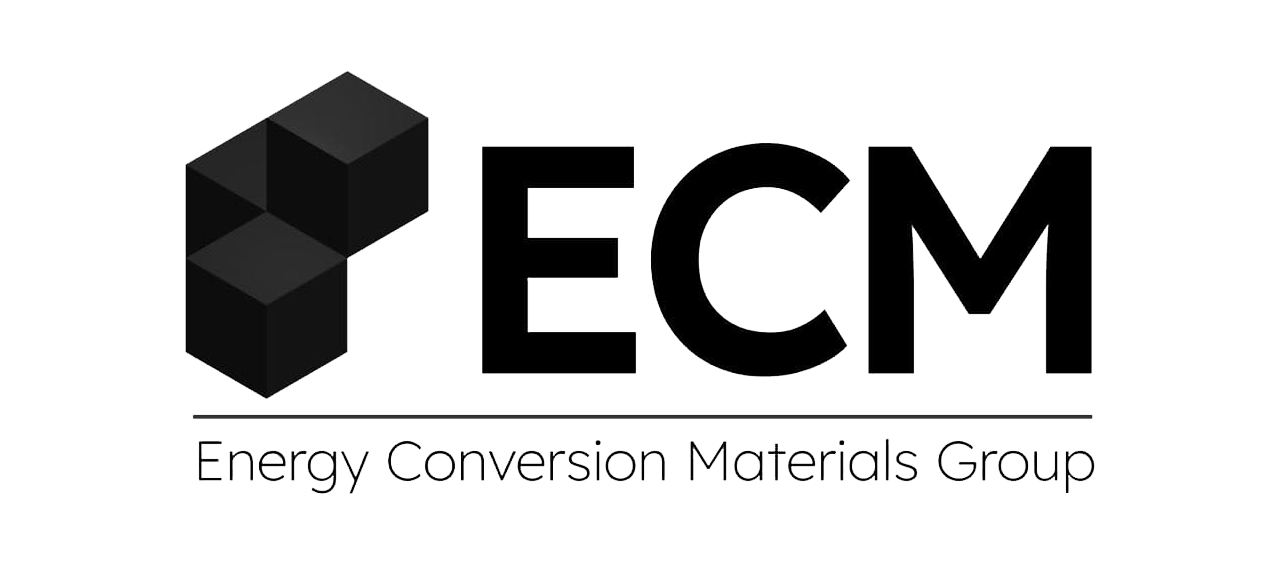Chalcogenides
Chalcogenides: AgXY2 (X = Sb, Sn; Y = Se,Te)
AgSbTe2
Specific order in cation sublattice of AgSbX2 chalcogenides is an important factor influencing their electronic structure and thus thermoelectric properties.
Silver-antimony telluride (AgSbTe2) is the end-compound of several systems exhibiting high thermoelectric performance, such as Lead-Antimony-Silver-Tellurium (LAST, AgPbmSbTe2+m), Tellurium-Antimony-Germanium-Silver (TAGS,(GeTe)x(AgSbTe2)1-x), and the pseudo-binary system with AgSbSe2 (AgSbSexTe2-x). In all of them it is possible to find materials characterized by ZT value significantly above 1 and the main factor of their good TE performance is a result of a remarkable low thermal conductivity, mostly close to a theoretically calculated minimum. It was shown experimentally that low thermal conductivity is intrinsic feature of AgSbTe2 due to strong anharmonicity of bonds resulting in the intense phonon-phonon scattering. The structure of AgSbTe2 is often described simply as a rocksalt-based system, where tellurium acts as an anion and Ag/Sb are statistically distributed over a cation sublattice, however, for more than a decade it is known that specific ordering of silver and antimony actually exists. Several experimental and theoretical studies have shown that most probable ordering in a system is Fd-3m and the second one is rhombohedral R-3m.
Fig. 1. Ag/Sb most probable ordering (Fd-3m and R-3m) in AgSbX2 (X = Se, Te).
Both structures are similar to each other what is related to identical first coordination sphere of tellurium atoms, where three silver atoms and three antimony atoms occupy vertices of opposite faces in a coordination octahedron. Such configuration results in the best adjustment of interatomic distances and thus bonds relaxation [1].
The important issue concerning AgSbTe2 is the fact, that the compound with exact composition Ag1Sb1Te2 does not exists and between 360 and 548 °C, the range of mid-temperature for thermoelectric applications, it decomposes into Ag2Te and δ-phase, which has a rocksalt structure and the composition Ag1-xSb1+yTe2.
Recently, it was shown that instability of silver-antimony telluride can be explained by antibonding contribution of Te-5p states in the valence band, based on analysis of crystal orbital Hamiltonian population. In such configuration p-type doping is strongly preferred since it removes some of the electrons occupying antibonding states, and thus stabilizes a whole system. Further investigation allowed to confirm that introduction of silver vacancies (VAg) decreases contribution of these states. However, the system containing large number of acceptor defects will attempt to, at least partially, compensate charge distortion by creating donor defects, such as Sb at Ag site (SbAg). The tendency of silver-antimony telluride to create these two types of defects easily is reflected in the composition of a stable δ-phase, characterized by small lack of silver and little excess of antimony in comparison to the stoichiometry of simple AgSbTe2.
Introduction of any kind of defect into a particular system results in changes not only of electronic states occupation and configuration, but also influences important local properties of a structure, such as distortions of atomic positions around the defect, or distribution of an electron density. Careful investigation of these changes may provide useful knowledge about the relationship between them and macroscopic features of a material. Thus in our studies [2], we explored several simple defects and their complexes in AgSbTe2 from the point of view of their local influence on a structure (especially to the most important VAg and SbAg defects).

